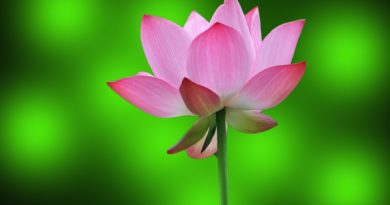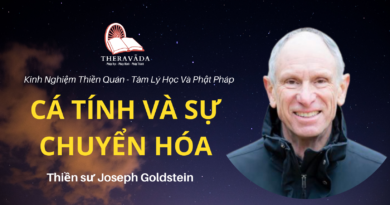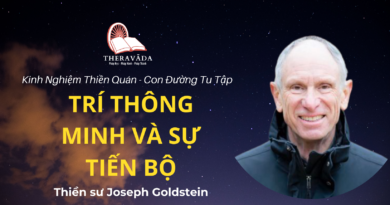BEGINNINGS: THE PALI SUTTAS – PART X: CHOOSING A STANDARD
BEGINNINGS: THE PALI SUTTAS – PART X: CHOOSING A STANDARD
In spite of all this there are still those who will insist that the four Nikayas as we have them contain material that, though in the guise of earlier texts, are, in fact, later additions.[48] Though few, perhaps, will go so far as to charge the monks with unscrupulous mendacity,[49] some will nevertheless reject many texts as “not original Buddhism.” Their reason for doing so is, almost always, a personal disagreement with the descriptions or instructions found therein. They will often conceal this fact with phrases like “historical doubts”, but in the end it comes down to their unwillingness to believe that a Fully Awakened One could possibly teach anything that they themselves did not agree with.
We do not entertain such notions, for we have not forgotten that we started out by acknowledging our need for guidance, and we do not presume to know as well as (or even better than) our guide. (See Ud. 77 (90-1).) But even so it must be admitted that anyone, and particularly Westerners, coming fresh to this Teaching will almost certainly discover discourses containing material that sounds, to their contemporary ears, improbable. This is a real problem for many newcomers; for it is likely that they will encounter approaches and attitudes which are unfamiliar. Until one has mastered the unsurpassable art of acquiescence (khanti), without which learning is impossible, there will naturally be resistance to what demands of us that we surrender those notions and conceits which we hold most dear. This is the difficult part of the Teaching, and to pretend otherwise would be to do a disservice to both the Teaching and the inquirer. And among the first resistances to arise nowadays will be those involving differences in world views. Since the Teaching comes to us embedded within a cultural context that is in some ways alien to the viewpoint with which we are on comfortable and familiar terms, it is natural that we congratulate ourselves for being so much more advanced. It can be profoundly difficult to recognize that the truths offered by our own culture are neither eternal nor absolute, and need not be valued any more highly than other viewpoints.
An analogy: Suppose it was said that there exist in this very world invisible beings — countless millions of them — which have the power to affect our welfare. Some of them are helpful, but others, unfortunately, cause only trouble and illness. However, there are certain people who wear special costumes and who possess special and powerful means whereby they can actually see these invisible beings. Moreover, they have devised special powders and potions by means of which they can counteract the baneful influence of the harmful beings. True or false? Most Westerners have derided this notion, sometimes vehemently, with snorts and sighs aplenty. But suppose now it were added that these invisible beings are called “germs” and “viruses” and that they have been investigated by white-coated laboratory scientists who possess electron microscopes, and who have discovered antibiotics and other drugs.
“Oh, but that’s different!” many will reply; and indeed it is. But what exactly is the difference? Language, certainly; but beyond that there is also a difference in the conceptual imagery used to account for the experience of illness. The imagery and vocabulary that are familiar are accepted while what is strange is rejected.
We do not wish to suggest by this analogy that the only difficulties in understanding the Buddha’s Teaching are linguistic or cultural: there is, beyond them, the personal difficulty, the difficulty which started us on our quest. We need to assert, cherish, and develop the view that the real difficulty is our own failure to see, as they really are, that craving and conceit which are themselves the condition for our own failure to see, as they really are, that craving and conceit…[50] But before ever coming to that difficulty a newcomer may find himself faced with thorny doubts, and he may not see the source of the thorns. He may assert that it rains due to appropriate meteorological conditions, and scoff at the Suttas’ suggestion that it rains because the rain gods are active (A. V,197 (iii,243)). After all, who has ever seen a rain god? But who has ever seen a meteorological condition?
The difficulty may be illustrated by an example from the author’s own experience. When I first began to inquire seriously into the Buddha’s Teaching, I found — in addition to much that impressed me most favourably — a discourse whose topic was “the thirty-two marks of a great man” and whose point (as I took it) was that these marks were physical and that the Buddha had such marks, ergo he was a great man. Coming from a rationalistic tradition, I was unable to accept this. It approached deification or worse, and seemed totally incompatible with the spirit of investigation that pervaded those Suttas that had most impressed me. Besides, some of these marks — projecting heels, ankles midway in the legs, legs like an antelope’s, no hollow between the shoulders, white hair growing between the eyes, head shaped like a turban, etc. — seemed quite simply freakish. I asked several of the other young Western monks, who confessed that they, too, could not accept this discourse. “Here,” I then decided, “is an obvious case of a later addition: this Sutta had to be invented by those who had never seen the Buddha.”
This view was confirmed when I noticed, in the Samannaphala Sutta of the Digha that when King Ajatasattu visited the Buddha for the first and only recorded time, as he approached the pavilion where the company of monks sat, he asked his physician which one of the monks was the Buddha (i,50), and he was told that the Buddha was the one sitting against the middle pillar. “Had the Buddha really been endowed with those peculiar, alien, and odious marks,” I reasoned, “the king would not have had to ask such a question. But even if he did ask, then the obvious answer to be given would have been that the Buddha was ‘that funny-looking fellow in the middle’.” And then I read the Dhatuvibhanga Sutta, M. 140, wherein it is told how the Buddha, travelling alone, put up one night side by side with a monk who told him that he (the monk) was on his way to meet the Buddha for the first time. Only after hearing a teaching did this monk realize, from the profundity of the discourse, that his companion had to be the Buddha himself. “Surely,” I decided, “if the Buddha had been endowed with those absurd marks, this monk would have known at once who his companion was.”
And so I set aside that discourse on the thirty-two marks, and all was well, until … I discovered another Sutta on the same subject, and then another, and another, and finally I realized (with some dismay) that the subject was dealt with, sometimes more than once, in every Nikaya except the Samyutta. Had it appeared only once, or maybe twice, I could have set it aside as an oddity and forgotten about it; but here it was popping up all over the place! My appreciation of the other discourses had been growing as their methodology became gradually more familiar and comfortable; but now my confidence in the authenticity of the collection as a whole was shaken. What was I to do?
“Leave it alone,” I was advised. “Use the Suttas for what they’re for: right-view guidance. There’s no Sutta that teaches the existence of a permanent condition, or of a pleasurable condition, or of anything that can be taken as self. Don’t reject what’s precious just because you think you see a few wrinkles in it.” And so for many years I did my best to ignore those “thirty-two marks” discourses and tried to make use of what was manifestly valuable.
During those years I came to a growing understanding of the importance of putting trust in one’s teacher (see note 5b) and a growing conviction that “they who have faith in the Buddha have faith in the highest: they who have faith in the highest have the highest results.” — A. IV,34 (ii,34) The Buddha knew that those who, trusting his advice, lived in accordance with it would do themselves the most good and therefore, with no conceit whatsoever, out of compassion for others, he did and said that which would achieve this end.
Everyone can and does change his appearance to some extent, as the situation requires. For example, when called in by the boss for a tongue-lashing, one may quite literally make oneself smaller by hunching the shoulders, etc., perhaps without even being aware of it; but when showing off before friends one may “walk tall”. Anyone who has practised meditation even to a modest extent is likely to come to an appreciation of the enormous powers that are available to one proficient in advanced levels of meditation. It becomes an easy matter to accept that the Buddha, or for that matter anyone meditatively advanced, even one who has not achieved enlightenment — Devadatta, for example, could alter his appearance to a far greater extent than most people, even to the extent of appearing with all thirty-two marks.
These mark, each of those discourses tells us, belong to the lore of the brahmana caste. The Suttas, it seems, never assert the correctness of this lore; nor do they digress into a refutation of it. In each case a brahmana came to the Buddha intent upon judging the Buddha’s worth as a teacher by whether he had these marks.[51] Knowing that appearances don’t matter but that rightly-placed confidence is of great value, the Buddha, it would seem, let those brahmanas see what would convince them of the truth that he is the “incomparable trainer of men to be tamed” and thereby won them over to acceptance of right conduct and, in some instances, to enlightenment: e.g. the brahmana Pokkharasadi of the Ambattha Sutta, D. 3.
I am still not particularly impressed that the Buddha could display those thirty-two marks that the brahmanas believed to be the signs of a great man, for I suspect that even Devadatta could have done so; but these Suttas were not addressed to me. They were intended to inspire faith in the brahmanas, who believed in their lore as we do in ours. More impressive is the display of wisdom that uses, rather than disputes with, cultural limitations to lead one to what transcends such limitations. I still have no special use in my own practice for those “thirty-two marks” Suttas, nor for others which, it seems, are also intended for those with a different sensibility — e.g. D. 14 on previous Buddhas and the birth of Bodhisattas; M. 129 on hell-realms and world-monarchs — but they are no longer a basis for doubt and scepticism, or a barrier to acquiescence in what is beneficial.[52] The lesson being, that it is not an act of wisdom to judge and reject discourses on the basis of personal preference or belief (ref. the Kalama Sutta, A. III,65 (i,188-93)), for if we do so, we then lose the possibility of transcending those preferences and beliefs.
Is it possible, then, to set forth a reasonable standard whereby, when we find ourselves encountering one of those “thorny barriers,” we can act reasonably? Perhaps the following will be relevant.
Having already acquired an overview of the Suttas — as one might inspect the general contours of a road map prior to setting out on a journey, without excessive concern for specific details — we will have noticed that certain passages are found repeatedly, with little variation, throughout the four Nikayas. If we have the Buddha’s Teaching at all, then surely we have it here: it would be the wildest irresponsibility to assume that the gist of the Teaching is found only outside these core texts. Not only must we accept them as authentic, but also as fundamental, of the essence, for why else would they be so often repeated? These texts can be trusted as being that right-view guidance we have been seeking. Should any of these oft-repeated discourses seem discrepant with one another or with our own views, then this is evidence that there is a difficulty in our own understanding which needs to be uncovered and resolved or abandoned.
We should be in no rush to judge. These Teachings cannot be understood except from their own point of view, and coming to understand that point of view is a growth that takes, usually, more time than we think it will. And we should be careful to take the Suttas quite literally, as saying what they mean and meaning what they say. They speak often of knowing both the letter and the spirit; nowhere do they advise an interpretive approach. We need to change ourselves, not the world, and the world includes the Suttas. To interpret is still to follow our own notions, rather than right-view guidance. Indeed, to interpret is to deny (“…when he says black what he really means is…” ).
With this background established, then those discourses which are found but once or twice can be considered. The bulk of them will present no difficulty. They will be seen to be in accordance with the root-texts, being variations or expansions on a theme, as too will those texts which we have identified as later additions to the four Nikayas. But should any of them seem to be in contradiction with one’s own understanding, then there is an opportunity to examine that understanding, to discover what needs to be surrendered.[53] However, if one is not yet at a stage of development where such acquiescence is possible, then that Sutta can be set aside, which is not to say rejected, until a time when understanding and calmness have been developed sufficiently so that a reconsideration of the text will be useful. By following such a practice one can come to know that, indeed, this Teaching is well-expounded, immediate, non-temporal, evident, leading, to be known individually by the wise.
We set out in search of a guide whereby we could find the way to resolve the root-problem of our personal existence. We have discovered that the Teaching of a Fully Awakened One is at hand, and that there is reason to trust, not reason to doubt, that Teaching. What remains is to put that Teaching to use, make it a personal reality. Restraint, renunciation and purification are difficult, not easy. But indulgence, attachment and defilements can never lead to happiness and peace. What needs to be done is clear. We have reached an end of our inquiry ready, at last, to begin.









